Many landscape and nature photographers are particularly fond of the autumn season. The hot summer days transition into comfortable days with cool mornings and evenings.
Days become shorter, allowing a photographer to capture images well after sunset and turn around to be back out before sunrise. Best of all, fall colors provide the landscape photographer with a wonderful pallet of colors. Leaves transition from green to various shades of yellow, orange and red.
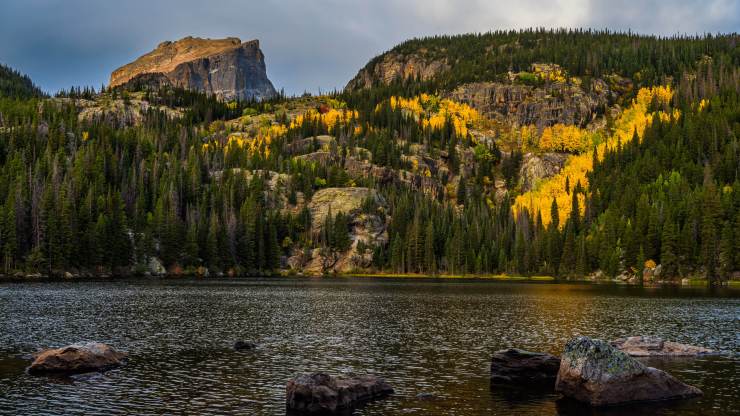
It is very helpful to carefully plan for a fall photography trip. Timing the trip to coincide with peak foliage color is particularly important. While good images can be captured with basic camera gear, there are a few items that can help to create great photos.
1. Location and timing
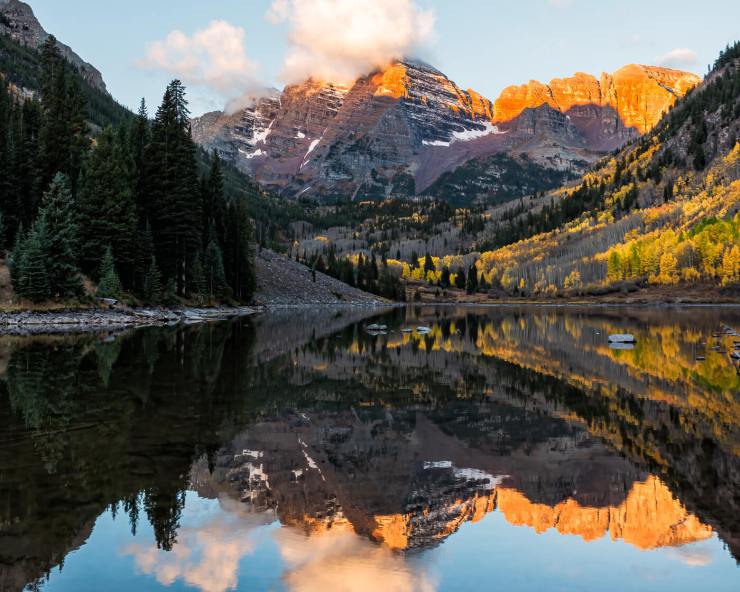
There are a number of resources available to help with the search for locations that photograph well during autumn. Books, magazine articles and website articles provide valuable information on where and when to go.
Many regions have specific times when peak colors typically occur. If you plan to go to a well-known fall destination, it is important to book hotel reservations early. Many national parks have implemented timed entry access, requiring advance reservations. Be sure to apply for the early morning access times, as morning light is often the best of the day and the reservation allows you to stay through the entire day into the evening.
While many resources provide estimated peak seasons based on historical averages, keep in mind that the actual peak can vary due to weather patterns and events. In my home state of Colorado, weather forecasters provide updates as fall approaches, taking into consideration factors including drought, rainfall and temperature. Our fall color season typically begins in the northern part of the state in early September and works its way to the south by early October.
During peak times of color, conditions can change rapidly if unexpected hard freezes, snow or heavy winds occur. During the season, I often refer to The Weather Channel’s Fall Foliage Report, which provides updates on conditions throughout the U.S.
2. Camera gear
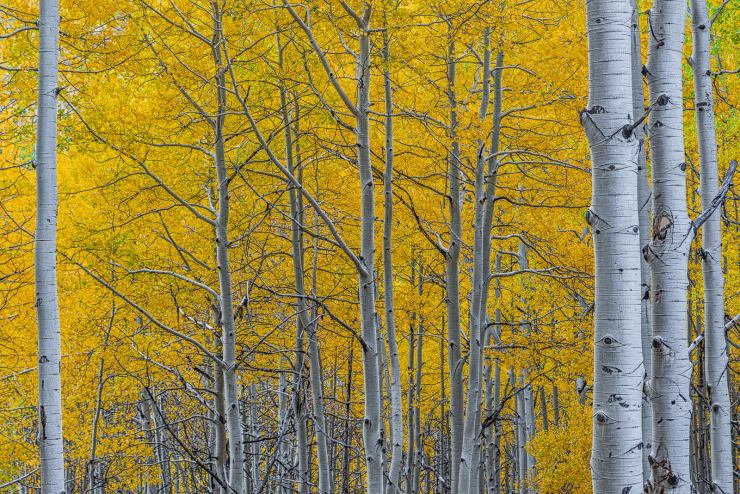
I typically bring my standard cameras including a Nikon Z7 II mirrorless and Nikon D850 DSLR. My infrared converted Nikon Z5 mirrorless is also often in my bag. I like to have a variety of lenses. Most landscape scenes can adequately be captured with a versatile lens such as 24-120mm. However, I enjoy looking for scenes that utilize everything from 15mm to 600mm. This allows me to capture everything from wide vistas to small tree clusters to individual trees and down to individual leaves.
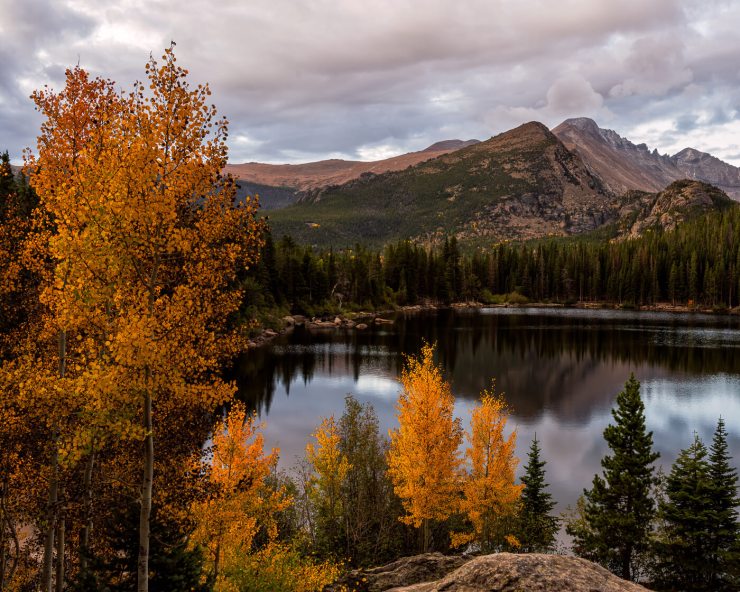
I like to carry filters with me, particularly in the fall. These include a circular polarize and a few neutral density filters. A circular polarize can help improve the brilliance of foliage colors, while also enhancing blue skies. Neutral density filters can be very helpful when capturing longer exposure images of waterfalls or moving clouds. However if there is any wind, keep in mind that long exposures will result in blurred foliage.
3. Weather and clothing
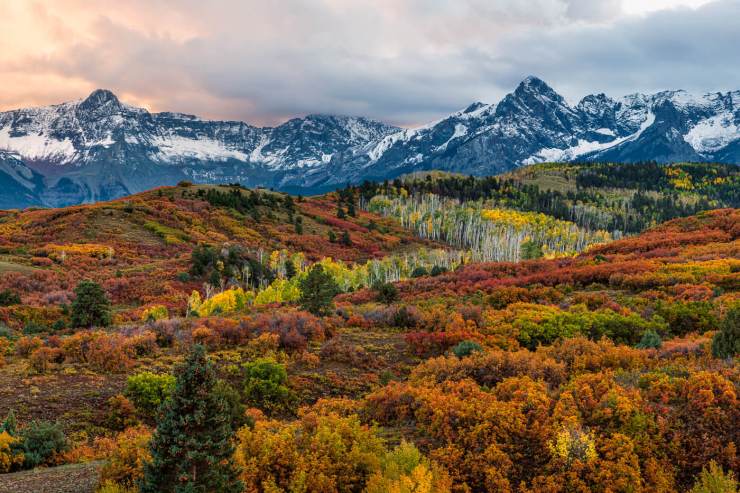
While autumn weather is often very pleasant and enjoyable, it is important to be prepared for possible cold temperatures, rain and even snow. Here in the mountains of Colorado, it is possible to have a snowstorm roll through during the fall color season.
Snowy peaks over fall foliage can provide amazing images, so you want to be dressed appropriately to take advantage of those opportunities. Jackets, fleece clothing, gloves, warm socks and sturdy hiking boots are important items to bring along. A rain cover for your camera and lens will allow you to shoot through the passing weather systems.
.mgl-tiles { display: none; } #mgl-gallery-634eb03a99404 { margin: -5px; width: calc(100% + 10px); } #mgl-gallery-634eb03a99404 .mgl-box { padding: 5px; } @media screen and (max-width: 768px) { #mgl-gallery-634eb03a99404 { margin: -5px; width: calc(100% + 10px); } #mgl-gallery-634eb03a99404 .mgl-box { padding: 5px; } } @media screen and (max-width: 460px) { #mgl-gallery-634eb03a99404 { margin: -5px; width: calc(100% + 10px); } #mgl-gallery-634eb03a99404 .mgl-box { padding: 5px; } }
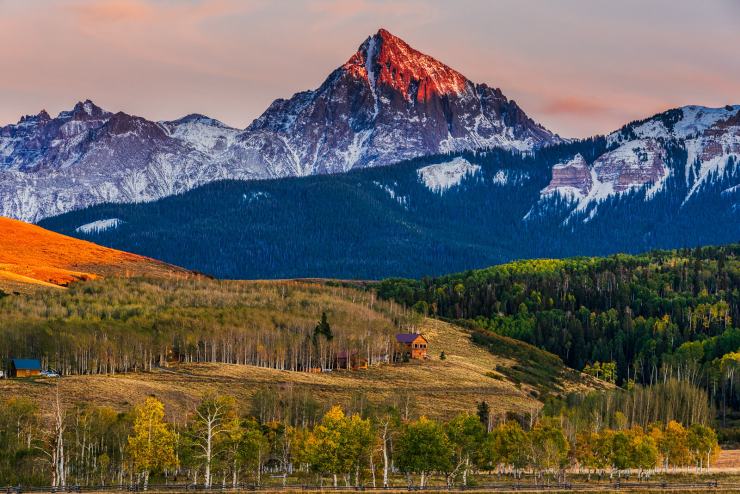
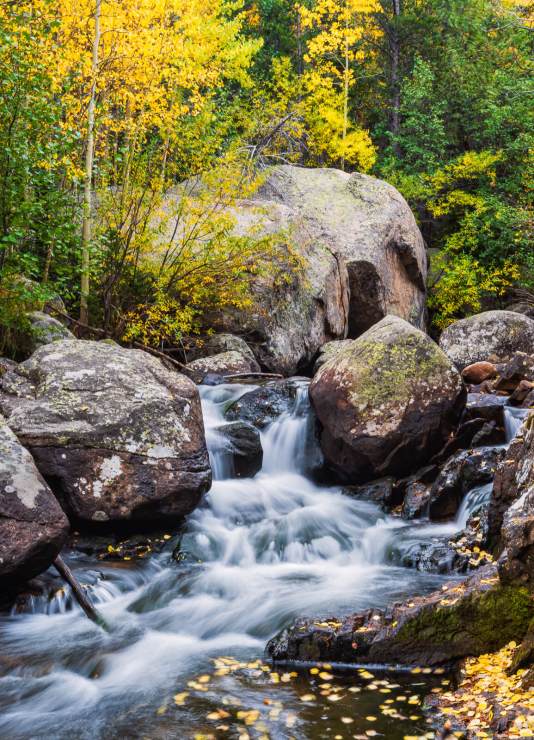
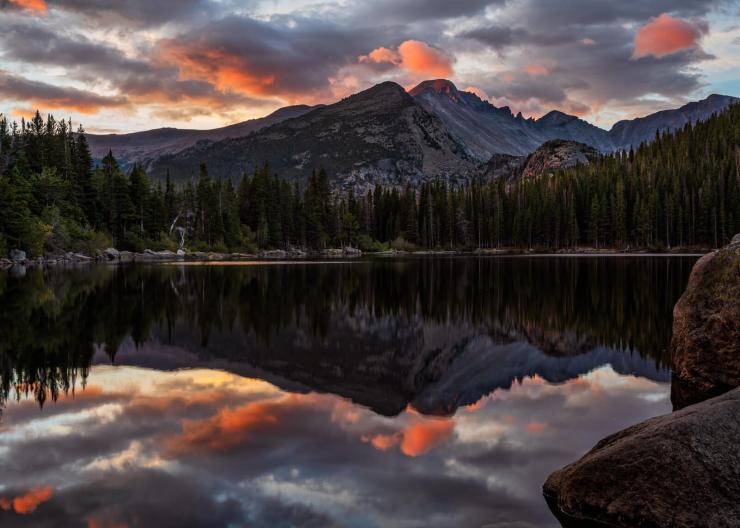
Tell your story with the second annual Visual Storytelling Conference!
Experience four days of interactive, online training sessions featuring a range of educational content with experienced photographers and content creators. This free event kicks off with a series of technical boot camps to build essential skills, followed by live, online sessions on photography, video, business and social media. Join live from March 10-13, 2022!
